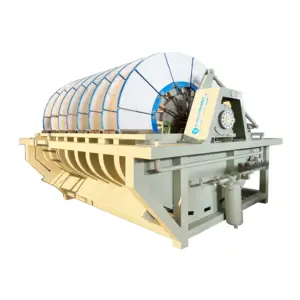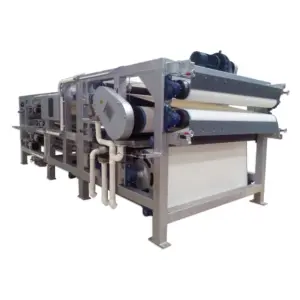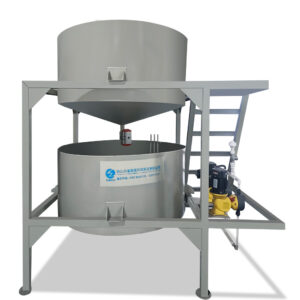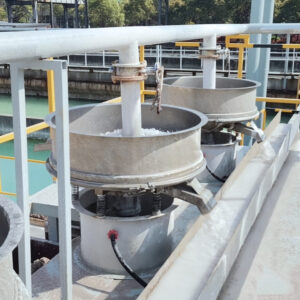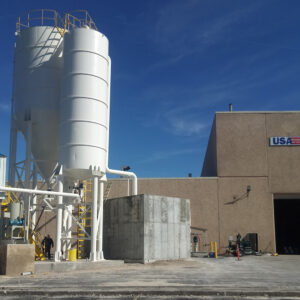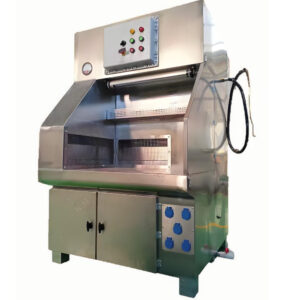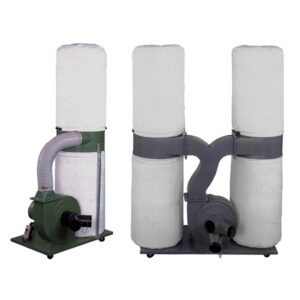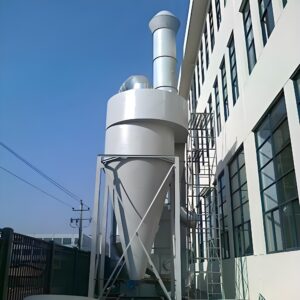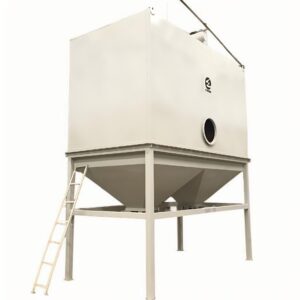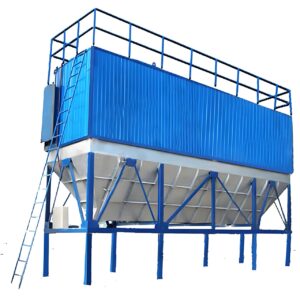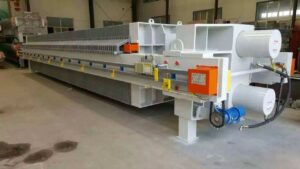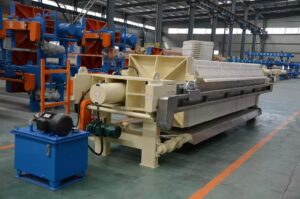Water treatment facilities worldwide face mounting pressure to optimize chemical consumption while maintaining strict effluent standards. A single miscalculation in chemical dosing can result in treatment failures, regulatory violations, and costs exceeding $50,000 per incident. Yet many facilities still rely on manual dosing methods that introduce human error and inefficiencies.
This precision challenge becomes critical when you consider that chemical costs typically represent 15-25% of total treatment operational expenses. Overdosing wastes resources and can create downstream complications, while underdosing compromises treatment effectiveness and compliance. The consequences extend beyond financial impact—poor dosing control can lead to equipment damage, environmental violations, and public health risks.
The solution lies in implementing sophisticated chemical dosing systems that combine automation, real-time monitoring, and intelligent control algorithms. This comprehensive guide explores how modern PAM PAC dosing systems, automated chemical dosing technologies, and intelligent control mechanisms can transform your water treatment operations from reactive to predictive, ensuring optimal performance while minimizing costs and risks.
What Are Chemical Dosing Systems and Why Are They Essential?
Chemical dosing systems represent the backbone of modern water and wastewater treatment facilities, precisely controlling the addition of treatment chemicals to optimize process efficiency. These systems encompass metering pumps, control units, monitoring sensors, and storage solutions that work in harmony to deliver exact chemical quantities based on real-time process conditions.
PORVOO Clean Tech has observed that facilities implementing automated dosing systems typically achieve 20-30% reduction in chemical consumption compared to manual methods. This efficiency gain stems from the system’s ability to respond instantly to flow variations, water quality changes, and treatment demands that would overwhelm manual operators.
Core Functions of Modern Dosing Systems
Chemical dosing systems serve multiple critical functions beyond simple chemical addition. They provide continuous monitoring of residual chemical levels, automatic adjustment based on feedback loops, and comprehensive data logging for compliance reporting. Advanced systems integrate with plant-wide SCADA networks, enabling centralized control and remote monitoring capabilities.
The precision aspect cannot be overstated. Modern metering pumps achieve accuracy levels within ±1% of set points, while traditional manual methods typically vary by 5-15%. This precision directly translates to cost savings—a 1000 GPM treatment plant can save $15,000-25,000 annually through improved dosing accuracy alone.
Integration with Treatment Processes
Successful chemical dosing requires seamless integration with existing treatment infrastructure. Systems must accommodate varying flow rates, handle multiple chemical types simultaneously, and provide failsafe mechanisms for equipment malfunctions. The most effective installations incorporate redundant pumping systems, automatic switchover capabilities, and comprehensive alarm systems that alert operators to any deviations from normal operation.
| System Component | Function | Typical Accuracy |
|---|---|---|
| Metering Pumps | Chemical delivery | ±1-2% |
| Flow Sensors | Flow measurement | ±0.5% |
| Control Units | Process automation | ±0.1% |
| Storage Systems | Chemical containment | N/A |
How Do PAM and PAC Dosing Systems Work in Water Treatment?
PAM (Polyacrylamide) and PAC (Polyaluminum Chloride) represent two of the most widely used chemicals in water treatment, each requiring specialized dosing approaches due to their distinct properties and applications. PAM PAC dosing systems must accommodate the unique characteristics of these chemicals while maintaining precise control over dosing rates and mixing conditions.
PAC functions as a coagulant, destabilizing suspended particles and enabling their removal through sedimentation or filtration. The dosing rate typically ranges from 10-50 mg/L depending on raw water turbidity and organic content. PAM serves as a flocculant, bridging coagulated particles to form larger, more settleable flocs. Its dosing rate is generally much lower, typically 0.5-5 mg/L, but requires careful preparation and handling due to its polymer chain structure.
PAC Dosing Mechanisms
PAC dosing systems utilize specialized metering pumps designed to handle the corrosive nature of aluminum-based coagulants. These pumps feature corrosion-resistant materials, typically PVDF or stainless steel wetted parts, and incorporate pulsation dampeners to ensure smooth chemical delivery. The control system monitors water turbidity, pH, and flow rate to determine optimal PAC dosing rates through advanced algorithms.
In our experience, the most effective PAC systems incorporate pre-dilution capabilities, mixing the concentrated chemical with process water at ratios of 1:10 to 1:20 before injection. This approach improves mixing efficiency and reduces the risk of localized high concentrations that can lead to equipment corrosion or treatment inefficiencies.
PAM Polymer Preparation and Dosing
PAM dosing presents unique challenges due to the chemical’s sensitivity to shear forces and aging effects. Advanced wastewater treatment systems incorporate specialized polymer preparation units that automatically mix dry or emulsion PAM with water under controlled conditions. These systems typically feature gentle mixing mechanisms, aging tanks with residence times of 30-60 minutes, and day tanks that provide consistent polymer solution to metering pumps.
The dosing control for PAM requires more sophisticated algorithms than traditional coagulants. Systems monitor settling rates, sludge blanket levels, and effluent turbidity to determine optimal polymer addition rates. Advanced installations utilize streaming current detectors or similar online analyzers to provide real-time feedback on polymer demand.
Synergistic Control Strategies
Modern installations recognize that PAC and PAM dosing must be coordinated for optimal treatment efficiency. Sequential dosing strategies typically involve PAC addition at the rapid mix stage, followed by PAM addition at the slow mix or flocculation stage. The control system must account for hydraulic retention times, mixing intensities, and chemical interactions to optimize the overall treatment process.
What Are the Key Components of Automated Chemical Dosing Systems?
Automated chemical dosing systems comprise several interconnected components that work together to deliver precise, reliable chemical addition. Understanding these components and their interactions is crucial for system selection, installation, and optimization.
Metering Pump Technologies
The heart of any dosing system lies in its metering pumps, which must deliver precise chemical quantities across varying operating conditions. Diaphragm pumps dominate the market due to their ability to handle corrosive chemicals while maintaining high accuracy. These pumps utilize flexible diaphragms that create pumping action without direct contact between pump mechanisms and chemicals.
Peristaltic pumps offer advantages for certain applications, particularly when handling viscous polymers or abrasive chemicals. Their tube-based design eliminates valves and seals, reducing maintenance requirements. However, they typically offer lower pressure capabilities and may require more frequent tube replacement.
Progressive cavity pumps excel in applications requiring high flow rates or when handling highly viscous chemicals. Their design provides smooth, pulse-free flow, making them ideal for polymer dosing applications where shear sensitivity is a concern.
Control and Monitoring Systems
Modern dosing systems incorporate sophisticated control units that process multiple input signals and execute complex control algorithms. These systems typically feature touchscreen interfaces, data logging capabilities, and communication protocols that enable integration with plant-wide control systems.
The control system processes inputs from flow sensors, chemical residual analyzers, and process condition monitors to determine optimal dosing rates. Advanced systems utilize proportional-integral-derivative (PID) control algorithms that continuously adjust dosing rates based on feedback from the treatment process.
Safety and Containment Systems
Chemical dosing systems must incorporate comprehensive safety measures to protect personnel and the environment. Secondary containment systems prevent chemical spills from reaching groundwater or surface waters. These systems typically feature leak detection sensors, automatic shutoff valves, and alarm systems that alert operators to any containment breaches.
| Component Type | Primary Function | Maintenance Frequency |
|---|---|---|
| Metering Pumps | Chemical delivery | Monthly inspection |
| Control Units | Process automation | Quarterly calibration |
| Sensors | Monitoring | Bi-annual replacement |
| Safety Systems | Containment | Annual testing |
Ventilation systems ensure safe working conditions around chemical storage and dosing equipment. These systems typically feature corrosion-resistant materials and explosion-proof electrical components when handling volatile chemicals.
How to Choose the Right Polymer Dosing System for Your Application?
Selecting appropriate polymer dosing systems requires careful consideration of multiple factors including polymer type, application requirements, and operational constraints. The wrong system selection can lead to poor treatment performance, excessive maintenance costs, and operational difficulties.
Polymer Characteristics and Requirements
Different polymers exhibit varying properties that directly impact dosing system requirements. Dry polymers require preparation systems that can handle dusty materials and provide adequate mixing without creating excessive shear. Emulsion polymers need systems capable of handling viscous liquids while maintaining uniform dilution ratios.
Cationic polymers, commonly used in sludge dewatering applications, require specialized materials that resist chemical attack from positively charged polymer chains. Anionic polymers, typically used in water treatment clarification, are generally less aggressive but may require specific mixing conditions to achieve optimal performance.
Application-Specific Considerations
Municipal water treatment applications typically favor systems with high reliability and low maintenance requirements. These installations often utilize diaphragm metering pumps with stainless steel or PVDF construction, along with redundant pump configurations to ensure continuous operation.
Industrial applications may require more specialized approaches depending on the specific industry and treatment requirements. Food processing facilities, for example, must comply with FDA regulations and may require sanitary-grade equipment with specific certification levels.
System Sizing and Capacity Planning
Proper system sizing requires detailed analysis of flow variations, chemical demand patterns, and future expansion requirements. Undersized systems cannot handle peak demand periods, while oversized systems may operate inefficiently during normal conditions and exhibit poor turndown ratios.
Economic Optimization Strategies
The most cost-effective polymer dosing systems balance initial capital costs with long-term operational expenses. While high-quality equipment may require greater initial investment, the reduced maintenance costs, improved reliability, and better treatment efficiency often justify the additional expenditure.
In our experience, facilities that invest in quality dosing systems typically achieve payback periods of 18-24 months through reduced chemical consumption, lower maintenance costs, and improved process efficiency. Comprehensive treatment solutions that integrate dosing systems with overall process control often provide even greater economic benefits.
What Are the Benefits and Limitations of Intelligent Chemical Dosing?
Intelligent chemical dosing systems represent the cutting edge of water treatment automation, incorporating artificial intelligence, machine learning, and predictive analytics to optimize chemical addition strategies. These systems promise significant operational improvements but also present certain challenges that must be carefully considered.
Advanced Control Capabilities
Intelligent dosing systems utilize sophisticated algorithms that go beyond traditional PID control strategies. Machine learning algorithms analyze historical data patterns, seasonal variations, and process correlations to predict optimal dosing strategies. These systems can identify subtle relationships between raw water quality parameters and chemical demand that human operators might miss.
Predictive control capabilities enable systems to anticipate chemical demand changes before they occur. By analyzing upstream conditions, weather patterns, and historical data, these systems can preemptively adjust dosing rates to maintain optimal treatment performance. This proactive approach typically results in 10-15% improvement in treatment efficiency compared to reactive control strategies.
Integration with IoT and Digital Platforms
Modern intelligent dosing systems leverage Internet of Things (IoT) connectivity to provide unprecedented visibility into system performance. Cloud-based platforms enable remote monitoring, predictive maintenance scheduling, and performance benchmarking across multiple facilities. These capabilities are particularly valuable for utilities operating multiple treatment plants or industrial facilities with distributed operations.
Data analytics platforms process vast amounts of operational data to identify optimization opportunities and performance trends. Advanced systems can detect equipment degradation before failures occur, enabling proactive maintenance scheduling that minimizes downtime and extends equipment life.
Limitations and Implementation Challenges
Despite their advantages, intelligent dosing systems present several challenges that must be addressed during implementation. The complexity of these systems requires skilled operators and maintenance personnel who understand both water treatment principles and advanced control technologies. Training costs and ongoing skill development represent significant investments that some facilities may struggle to justify.
Cybersecurity concerns become paramount when dosing systems connect to corporate networks or cloud platforms. Robust security measures, including network segmentation, encryption, and access controls, are essential to prevent unauthorized access that could compromise treatment processes or public safety.
The initial investment for intelligent dosing systems can be substantial, often 2-3 times the cost of conventional automated systems. While operational savings typically justify this investment over time, the upfront costs may present financial challenges for smaller facilities or those with limited capital budgets.
| Benefit Category | Typical Improvement | Implementation Cost |
|---|---|---|
| Chemical Efficiency | 15-25% reduction | High |
| Maintenance Costs | 20-30% reduction | Medium |
| Operator Requirements | 30-40% reduction | High |
| Compliance Assurance | 95%+ reliability | Medium |
How to Optimize Performance in Coagulant Dosing Equipment?
Coagulant dosing equipment requires careful optimization to achieve maximum treatment efficiency while minimizing chemical consumption and operational costs. The optimization process involves multiple interconnected factors that must be balanced to achieve optimal performance.
Hydraulic Optimization Strategies
Proper mixing energy and retention time are critical for effective coagulant performance. Rapid mix systems typically require G-values (velocity gradients) of 300-1000 s⁻¹ to ensure thorough chemical dispersion. However, excessive mixing can break newly formed flocs, reducing treatment efficiency. The optimal mixing intensity depends on coagulant type, water temperature, and raw water characteristics.
Mixing point selection significantly impacts coagulant effectiveness. Injection points should provide immediate, thorough mixing while avoiding areas with excessive turbulence that could damage fragile flocs. Multiple injection points may be necessary for large-scale installations to ensure uniform chemical distribution.
Chemical Feed Rate Optimization
Coagulant dosing rates must be continuously optimized based on raw water quality variations. Jar testing provides baseline dosing requirements, but real-time optimization requires sophisticated control algorithms that account for multiple process variables simultaneously. Advanced systems utilize streaming current detectors, zeta potential analyzers, or similar online instruments to provide continuous feedback on coagulant demand.
Seasonal variations in raw water quality require adaptive dosing strategies. Algae blooms, temperature changes, and seasonal runoff patterns all impact coagulant requirements. Intelligent systems learn these patterns and can automatically adjust dosing strategies based on seasonal trends and weather forecasts.
Equipment Maintenance and Calibration
Regular calibration ensures accurate chemical delivery throughout the equipment’s operational life. Metering pumps should be calibrated monthly using volumetric or gravimetric methods to verify actual delivery rates match controller settings. Calibration frequency may need to increase in corrosive environments or when handling abrasive chemicals.
Preventive maintenance programs should address all system components, including pumps, valves, sensors, and control systems. Pump diaphragms and check valves represent the most common failure points and should be inspected regularly. Sensor calibration and cleaning are critical for maintaining accurate process control.
What Are the Latest Trends in Chemical Dosing Automation?
The chemical dosing industry continues to evolve rapidly, driven by advances in sensor technology, artificial intelligence, and regulatory requirements. Understanding these trends helps facilities plan for future upgrades and stay competitive in an increasingly demanding regulatory environment.
Sensor Technology Advancements
Next-generation sensors provide more accurate, reliable measurements of critical process parameters. Optical sensors for turbidity and color measurements offer improved accuracy and reduced maintenance compared to traditional nephelometric sensors. These sensors can detect subtle changes in water quality that indicate optimal dosing adjustments.
Multi-parameter sensors that simultaneously measure pH, turbidity, conductivity, and other parameters reduce instrument complexity while improving measurement correlation. These integrated sensors provide comprehensive water quality data that enables more sophisticated control algorithms.
Artificial Intelligence Integration
Machine learning algorithms are becoming increasingly sophisticated in their ability to optimize chemical dosing strategies. These systems can process vast amounts of data to identify complex relationships between process variables and treatment performance. The result is more precise dosing control that adapts to changing conditions without human intervention.
Predictive analytics capabilities enable systems to anticipate maintenance needs, chemical supply requirements, and performance issues before they impact operations. This proactive approach reduces downtime, minimizes emergency repairs, and improves overall system reliability.
Regulatory and Sustainability Drivers
Increasingly stringent discharge regulations drive demand for more precise chemical dosing systems. Facilities must demonstrate consistent compliance with effluent limits, making accurate dosing control essential for regulatory compliance. Advanced dosing systems provide the documentation and control precision necessary to meet these requirements.
Sustainability concerns push facilities toward more efficient chemical usage and reduced environmental impact. Modern dosing systems contribute to these goals by minimizing chemical consumption, reducing waste generation, and optimizing energy consumption through improved process efficiency.
The economic benefits of optimized chemical dosing continue to drive adoption of advanced systems. Facilities that implement state-of-the-art treatment technologies typically achieve significant cost savings through reduced chemical consumption, improved process efficiency, and lower maintenance costs.
Conclusion
Chemical dosing systems have evolved from simple mechanical devices to sophisticated, intelligent platforms that optimize treatment processes while minimizing costs and environmental impact. The integration of PAM PAC dosing systems, automated chemical dosing technologies, and intelligent control mechanisms provides unprecedented precision and efficiency in water treatment operations.
The key insights from this comprehensive analysis reveal that successful implementations require careful consideration of system components, proper sizing, and ongoing optimization. Modern chemical dosing systems achieve 20-30% improvements in chemical efficiency while reducing maintenance costs and improving compliance assurance. However, these benefits require appropriate investment in quality equipment, skilled personnel, and comprehensive maintenance programs.
Your next steps should focus on conducting a thorough assessment of current dosing practices, identifying optimization opportunities, and developing an implementation roadmap that aligns with operational goals and budget constraints. Consider pilot testing advanced technologies before full-scale implementation, and ensure adequate training for operations and maintenance personnel.
The future of chemical dosing lies in continued integration of artificial intelligence, enhanced sensor technologies, and predictive analytics capabilities. Facilities that invest in these advanced technologies today will be better positioned to meet tomorrow’s regulatory requirements while maintaining competitive operational costs.
How will your facility leverage these advanced chemical dosing technologies to improve treatment efficiency and reduce operational costs? The path forward requires careful planning, but the potential benefits make this investment essential for long-term success in water treatment operations.
Frequently Asked Questions
Q: What is a Chemical Dosing System and how does it relate to the PAM PAC Automation Guide?
A: A Chemical Dosing System is specialized equipment designed to automatically and continuously add precise amounts of chemicals, often dry powder or liquid, into water treatment processes. The PAM PAC Automation Guide specifically addresses systems that handle polyacrylamide (PAM) and polyaluminum chloride (PAC), focusing on their preparation, dissolving, and dosing. This guide helps users understand how to operate and optimize these systems for applications like wastewater treatment, ensuring accurate chemical mixing and dosing for processes such as coagulation, flocculation, and pH control.
Q: What are the main components of a Chemical Dosing System described in the PAM PAC Automation Guide?
A: The core components include:
- A solution tank where chemicals and water are mixed
- An agitator or mixer to ensure uniform chemical solution
- A metering pump that controls the precise amount of chemical delivered
- A control cabinet with automation to regulate dosing rates
- Sensors such as level gauges, pH meters, or conductivity controllers for monitoring
- Pipelines and valves for fluid transport
These components work together under automated control to deliver accurate and consistent dosing, reducing manual labor and improving system reliability.
Q: How does automation improve the efficiency of Chemical Dosing Systems in PAM PAC applications?
A: Automation in Chemical Dosing Systems allows for:
- Precise control of dosing volumes via frequency converters or stroke adjustments
- Continuous operation with minimal manual intervention
- Real-time monitoring of solution concentration, pH, and conductivity to adapt dosing
- Remote control capabilities for timely adjustments
- Enhanced safety by utilizing corrosion-resistant materials and compliance with environmental standards
Overall, automation ensures consistent chemical performance, reduces human error, and optimizes operational costs.
Q: What types of chemicals are typically dosed using the Chemical Dosing Systems covered in the PAM PAC Automation Guide?
A: Common chemicals include:
- Polyelectrolytes (like PAM) for flocculation and suspended solids removal
- Polyaluminum chloride (PAC) for coagulation in water treatment
- Acids and alkalis to adjust pH and reduce scaling
- Scale inhibitors to protect membranes such as reverse osmosis
- Disinfectants like chlorine to prevent bacterial growth
- Hydrated lime or caustic soda for neutralizing dissolved carbon dioxide
These chemicals are essential for maintaining water quality in sewage treatment, industrial processes, and drinking water systems.
Q: What are the advantages of using the PAM PAC Chemical Dosing System for water and wastewater treatment?
A: Using these dosing systems provides several benefits:
- Accurate and uniform chemical dosing improves treatment efficiency
- Automation reduces labor and operational costs
- Corrosion-resistant materials increase system lifespan, especially in harsh chemical environments
- Adjustable parameters allow customization to different process requirements
- Can be equipped with advanced monitoring tools for pH, redox potential, and conductivity to ensure optimal chemical balance
- Special designs are available for hazardous environments such as petrochemical plants and marine applications
These advantages make PAM PAC dosing systems a reliable choice for modern water treatment.
Q: How should one maintain and operate a Chemical Dosing System according to the PAM PAC Automation Guide?
A: Proper operation and maintenance include:
- Regular inspection of the agitator, pump, and sensors for wear or malfunction
- Keeping mixing tanks clean to prevent clogging or contamination
- Monitoring chemical concentrations and adjusting dosing accordingly
- Utilizing automated controls to maintain consistent dosing rates
- Scheduling preventive maintenance to replace parts before failure
- Ensuring safety measures when handling corrosive or hazardous chemicals
Following these guidelines prolongs system life and ensures continuous, effective dosing performance.
External Resources
- Automatic dosing system PAC PAM – Bluewav Technology Co.,Ltd – Detailed overview of automatic PAC/PAM dosing systems including features, working principles, component options, and automation capabilities for industrial water treatment.
- What is chemical dosing system? – HAOSH Pump – Explains the functionality of chemical dosing systems, with a dedicated section on PAM PAC powder dosing systems and their typical applications in water treatment.
- What is chemical dosing system? – waterHQ – An authoritative introduction to chemical dosing systems, highlighting automatic and continuous PAM PAC powder dosing equipment and key use cases.
- Wastewater Treatment Plant Chemical Dosing Automatic PAC PAM – Wastewater Machinery – Describes an integrated PAC and PAM dosing system for wastewater treatment, focusing on automation features and the polymer preparation process.
- Automatic Dosing System Installation: How-To Guide – porvoo – A practical guide to installing automatic chemical dosing systems, detailing main components, installation tips, and operational best practices.
- Chemical Dosing Systems Explained – Chemicals Northwest – Comprehensive explanation of chemical dosing systems, their importance in various industries, and typical chemicals used, including PAC and PAM for water and wastewater treatment.
